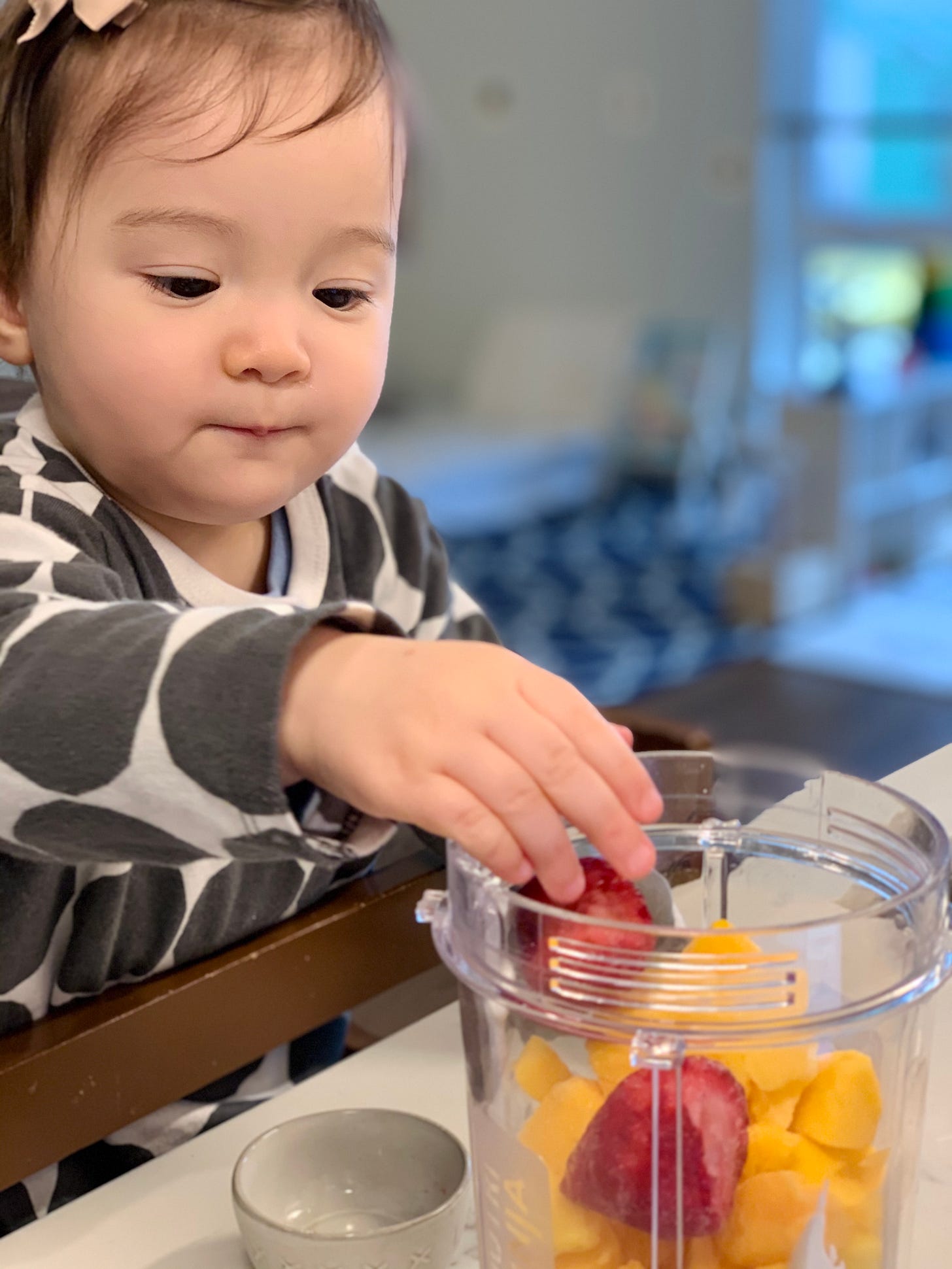Dealing with Toddler Whining
There is no more stressful noice than hearing your child whine... why they're doing it, how to help them, and more!
It’s a sound that every parent dreads. It makes you feel deflated, stressed, and powerless. Yet, it is a sound that every parent has to deal with. It’s that high pitched, torturous, ear-splitting sound of your toddler whining. For me personally, I have to be careful because the sound of L (15 months) whining can easily make me too stressed to stay calm and be a very effective parent.
The good news is, almost all of the research and experts I have read agree on why toddlers and how to help them and ourselves through it. I will do my best to walk you through what I have learned and what the science says.
Every child whines. It is not a reflection of your parenting and does not mean there is anything wrong with your child. Whinging is meant to get our attention, and it works! It is annoying, but whining can also be a good thing and a reason to slow down and really connect with our little ones.
Why do toddler’s whine?
Toddlers whine for a few main reasons. One reason is that they feel powerless. They feel like they can’t meet their need or count on the adult to meet it for them. If the need is something that they are dependent on an adult for (getting a drink of water, for example) we can help them learn to do this independently (setting up the environment to make it possible for them to get their own drink of water through the use of a learning tower or functional kitchen, for example). If the need is something they can get independently but aren’t, there is a good chance that what they need is time connecting with you. I find that this is often the case with L. She whines when she needs 10 minutes to reconnect with me through cuddling, reading a book, or playing. When I take the time to reconnect with her before finishing what I was doing, she is always ready to go back to happily playing independently after.
Another common reason toddlers whine is that they simply don’t have the words to communicate. Especially when they are tired, hungry, or experiencing a strong emotion, they might not have access to all the words they already know. When their emotions are running high they they have dissolved into whining, using that moment to teach them the words is not helpful to them either. They have already reached a state of emergency in their mind and won’t remember what you are trying to teach them. Instead, pre-empt this kind of whining by teaching your toddler sign language. Studies show that toddlers who sign are less whiny and have fewer tantrums. This is because manual skills develop much faster than verbal skills, so toddlers who sign can better communicate their needs. Studies also show that toddlers who sign tend to have a higher IQs later in life as signing increases language capacity! We have been teaching L signs since she was 5 months old and they have definitely helped when she has been in a bad state. I suggest starting with functional words (milk, eat, up, more, all done, ouch) and growing your child’s vocabulary from there.
Toddlers whine when they are frustrated or need to express their feelings. Research shows that whining, not just crying, is a way for children to express sadness and disappointment. Remind yourself to “Let feelings be” as Janet Lansbury says. Accept and acknowledge the way your toddler is feeling, “that tower you are building keeps falling down, that is so frustrating, isn’t it?”. Support your child through the emotion, “I am here if you need me”.
Finally, toddlers whine with they are tired and hungry. Toddlers have periods where they may require extra sleep or be unusually tired. Try for an earlier bedtime if possible. I have noticed that L often whines when she is hungry. Especially if she is teething and eating hurts. One tip I have here is to offer a smoothie (see recipe below)! I also have started keeping freeze dried (unsweetened and unsulfured) berries from Trader Joe’s in my backpack to offer when she is starting to get hungry. She loves them!
Finally, don’t let the whining rattle you. That is probably the hardest thing for me. Take a deep breath and remind yourself that your child’s behavior is normal. You don’t want to encourage it, so staying positive and available to your child is key.
Some articles with great tips on handling whining and more
This article by Janet Lansbury was the inspiration for much of this post.
She lists 5 steps to take to peace from whining. A couple of things she points out is to make sure your child’s basic needs are met (food, rest, drink, comfort) and offering your child undivided positive attention. Give your child the message that they are important and number one for you right now.
This article by Simone Davies of The Montessori Notebook about dealing with Toddler Tantrums.
This is a lengthy article, but has a ton of tips and even a FAQs section! She also provides a great ‘cheat sheet’ to save for when you need it! She gives 8 tips for preventing tantrums and lists triggers that can cause tantrums. She then gives tips for helping your child calm down. One tip I liked is the idea to create a calm down space in your home for older toddlers and children (note NOT a time out space!). This could be a tent with some pillows or some of their favorite things. When L is a little older, I will try this!
This course from Teresa of Montessori in Real Life and Bridget of Montessori in Motion.
They are again offering their Montessori Parent’s Guide course. Hurry! It starts today! You should still be able to sign up today and tomorrow and they will be offering it again soon, so keep it on your radar! It is $109 for 7 days of 10-20 modules, a workbook, and a personal chat room with other participants, Teresa, and Bridget available for two weeks. You will have the course available to rewatch for two months. It includes respectful parenting, handling challenging behaviors, setting up a Montessori home, and more!
The Best and Most Loved Smoothie Recipe for Teething Toddlers
If your toddler is anything like mine, they refuse to eat when they are teething, yet they are very hungry. This creates a very crabby kiddo. I have found smoothies to be a great option. They allow you to pack in a ton of nutrition in a great tasting way that is COLD and feels great on painful gums. The bonus is that it is a quick, healthy, and delicious breakfast for the whole family!
This particular recipe has 18 (9 per serving) grams of protein, is full of whole grains, and fiber! It includes health boosting fruits, and super fruit Acai! It also has whole greek yogurt and oatmeal to make a well rounded meal! It tastes AMAZING!
Ingredients
1/4 cup old fashioned oats
1/2 a banana
1/2 cup plain whole milk Greek yogurt
3/4 cup frozen mango
3/4 cup frozen strawberries
3/4 cup unsweetened soy milk
1 frozen Acai packet
Method
Place all ingredients in a blender and blend until smooth. Serve immediately.








